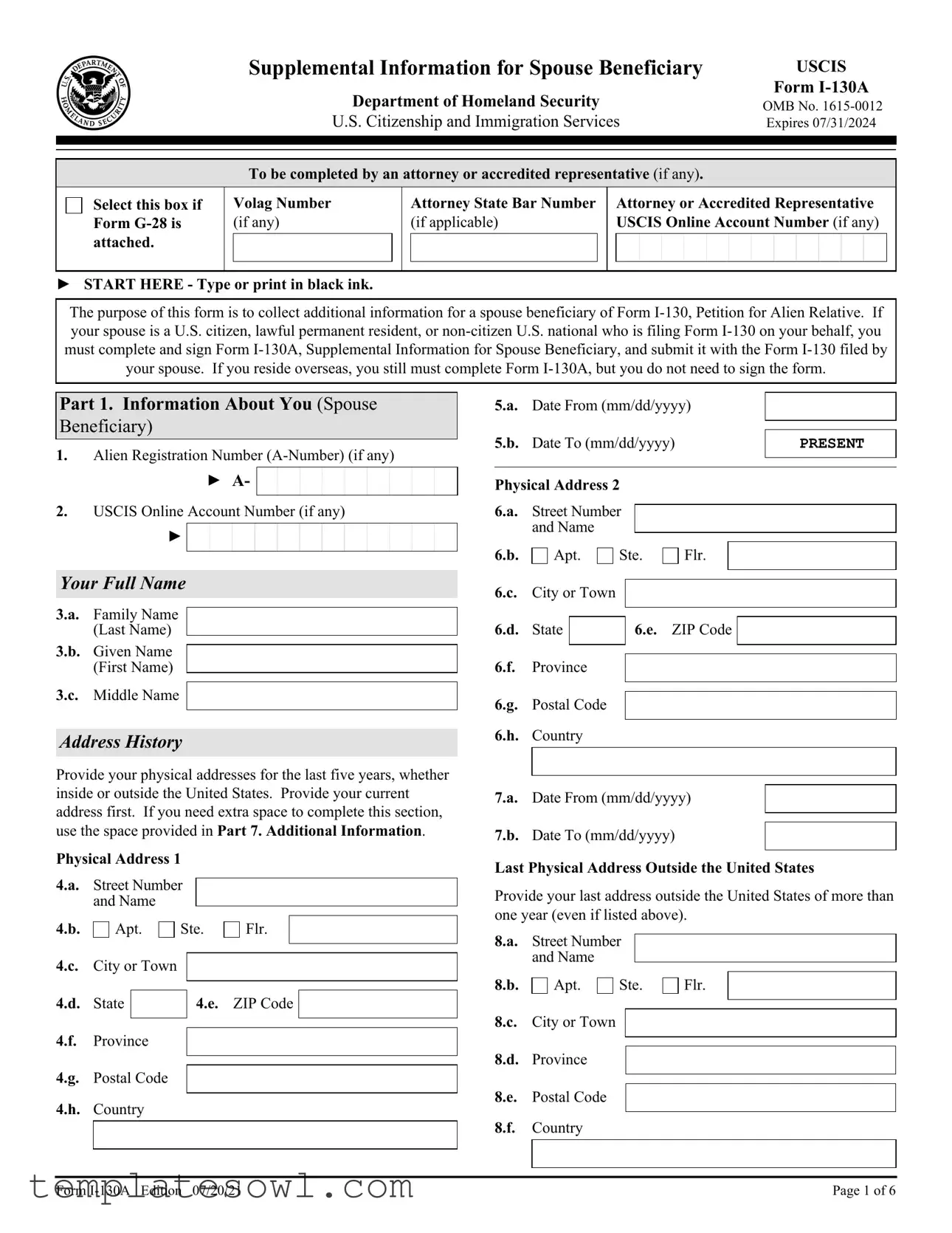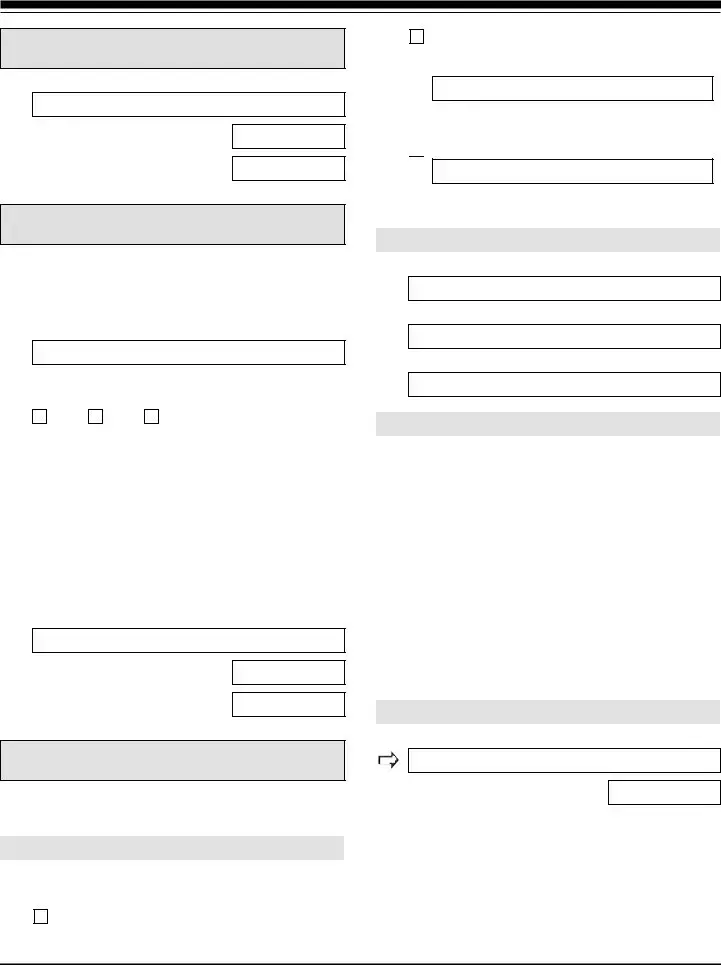What is the purpose of Form I-130A?
Form I-130A is used to collect additional information about a spouse beneficiary when a U.S. citizen or lawful permanent resident files Form I-130, Petition for Alien Relative. This form provides necessary supporting data to help USCIS process the petition effectively.
Who needs to fill out Form I-130A?
The spouse beneficiary of a Form I-130 petition must complete and sign Form I-130A. This applies if your spouse is a U.S. citizen, a lawful permanent resident, or a non-citizen U.S. national who files Form I-130 on your behalf. If you reside outside the United States, you still need to complete Form I-130A, but you do not have to sign it.
What information do I need to provide in Form I-130A?
You will need to provide your personal information, including your name, address history for the last five years, employment history for the last five years, and information about your parents. This also includes detailing any past addresses and jobs you held both inside and outside the United States.
What happens if I don’t complete Form I-130A fully?
If Form I-130A is incomplete or if you fail to submit the required documents listed in the instructions, USCIS may deny the underlying Form I-130 petition filed on your behalf. It is crucial to provide accurate and thorough information for a smoother process.
Can I submit Form I-130A separately from Form I-130?
No, you must submit Form I-130A along with Form I-130. Both forms are part of the same application process, and failure to include Form I-130A will delay or jeopardize the processing of your petition.
Is there a fee for submitting Form I-130A?
There is no separate fee for Form I-130A. The submission of this form is included in the fees associated with Form I-130. Ensure you pay the correct fee for that form as part of your application package.
Do I need an attorney to fill out Form I-130A?
No, you do not need an attorney to fill out Form I-130A. However, if you choose to have an attorney or accredited representative assist you, they must complete the relevant sections of the form and may need to attach Form G-28 to indicate their involvement.
What should I do if I need help filling out Form I-130A?
If you need assistance, consider reaching out to a qualified immigration attorney or an accredited representative who specializes in immigration matters. They can guide you through the process and help ensure that all information is accurately provided.
How can I check the status of my application after submitting Form I-130A?
You can check the status of your application online using the USCIS website. You will need your receipt number, which is provided once USCIS accepts your application. Regularly checking the status will help you stay informed about any additional requirements or updates.
What should I do if I make a mistake on Form I-130A after it has been submitted?
If you discover a mistake after submission, you should contact USCIS as soon as possible to inform them of the error. Depending on the nature of the mistake, you may need to submit a correction or additional information to ensure your application is processed accurately.




 At my request, the preparer name in
At my request, the preparer name in 

 extends
extends  does not extend beyond the preparation of this form.
does not extend beyond the preparation of this form.